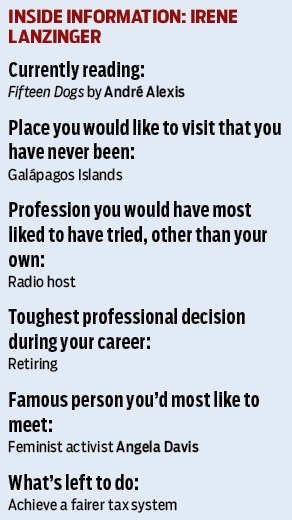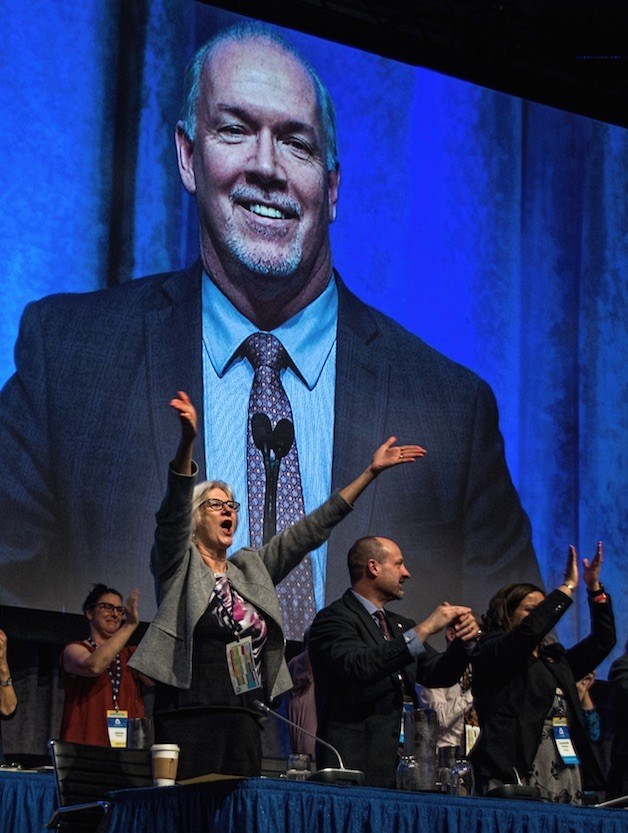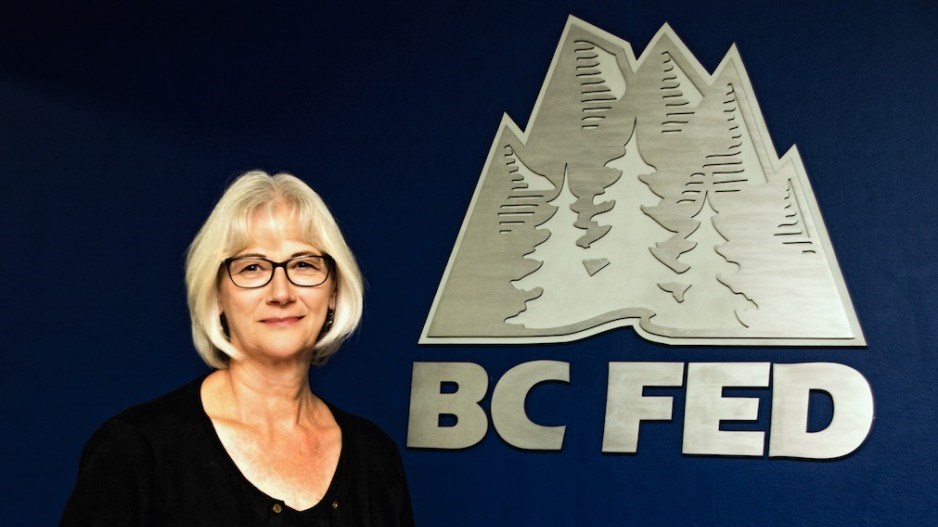Irene Lanzinger left her job as president of the BC Federation of Labour (BC Fed) last week, but she keeps a lengthy list of priorities that she believes the labour movement needs to continue to act on.
The 64-year-old told Business in Vancouver November 27 that she views her future as “semi-retirement” because she is open to working on short-term projects related to the labour movement if those opportunities arise.
Otherwise, she will tend to gardening, spend time on her sailboat and take trips, including excursions to Vienna to see her new grandson.
“I’ve been so busy the last couple months, I haven’t really had time to make plans,” Lanzinger said.
Lanzinger said deciding not to run for re-election was not easy, but it was the right move because she believes that the labour movement is in a good place, with the union-friendly BC New Democratic Party (NDP) government in Victoria and B.C.’s unions more united today than they have been in many years.
New BC Fed president Laird Cronk on November 29 won by acclamation – a show of unity that has been absent at recent conventions.
Lanzinger’s election as BC Fed president in 2014 was due in part to support from the Hospital Employees’ Union, the Health Sciences Association, Unifor and the BC Teachers’ Federation, in which she had served as president.
Her opponent, Amber Hockin, lost by 57 votes at the convention that had about 2,000 delegates, despite support from the Canadian Union of Public Employees BC, the United Steelworkers District 3 and the BC Government and Service Employees’ Union.
The BC Fed’s 2012 convention was also hotly contested, with longtime president Jim Sinclair fending off a challenge from International Brotherhood of Electrical Workers Local 258 executive Michelle Laurie to win his final term in office.
Delegates at last week’s BC Fed convention interrupted Lanzinger’s farewell address many times with applause, and ended it with a standing ovation.
That may have been because Lanzinger avoided mentioning controversial megaprojects such as the $10 billion Site C dam or the $40 billion LNG Canada project. Both of those projects are divisive among the BC Fed’s more than 500,000 members, with critics viewing them as environmental catastrophes and supporters touting them as job creators.
Instead, Lanzinger hammered home popular messages, such as “Unions are a poverty reduction strategy” and “We don’t make gains because the boss decides to give us things – we have to fight for everything we get.”

Lanzinger may be best known for a campaign for which she was the public face – the drive to get the provincial government to raise the minimum wage to $15 per hour.
She remembers that in 2014, when she made lobbying for that increase a priority, the minimum wage in B.C. was $10.25 per hour. Many people told her that $15 was “much too high,” she said, and that she should be instead lobbying for a $13.50 or $14 minimum wage.
Nonetheless, that early work was important, as she believes that it laid the foundation that enabled the NDP to campaign on a promise during the 2015 provincial election campaign to raise the minimum wage to that level.
“Now $15 seems too low, because it is too low,” Lanzinger told the BC Fed convention. “Workers deserve living wages, and we are going to keep up our fight for that. But on the way, we’re going to get to our goal of a $15 minimum wage – too slowly, as I constantly remind the premier and the labour minister, too slowly, but we’re going to get there.”
Pioneering leadership
Lanzinger reflected on the many media interviews that she has given, saying that whenever she was asked about being the first woman to lead the BC Fed, the interviewer was likely to ask whether that achievement was significant, which she thought was “kind of an odd question, frankly.”
She said that she has many times stressed the importance of having women in leadership positions, because they serve as role models for younger women. Women can also bring a different perspective to decisions, she added.
Lanzinger said one question no reporter ever asked her was why it took so long for a woman to lead an organization as “progressive” as the BC Fed.
“There are a lot of complicated answers to that question but fundamentally it took so long because there are systematic barriers in place that hinder the progress of equity-seeking groups,” she said.
“We need to analyze those barriers and work on breaking them down so that our movement and our leadership reflects our membership and our province.”
To best represent workers and build the strongest movement possible, the BC Fed needs to do a better job at diversifying its leadership, she added.

(Image: Irene Lanzinger cheers while B.C. Premier John Horgan gives a speech on November 28 at the BC Fed convention | Chung Chow)
There are other things that Lanzinger hopes the new BC Fed leadership and the province’s NDP government will accomplish together.
B.C.’s Employment Standards Act needs to be updated, for example, to include things such as paid sick leave for all and leave for victims of domestic violence, she said.
She would also like to see an apprenticeship system that includes more compulsory trades, or trades in which registration as an apprentice or journeyperson candidate or certification as a journeyperson is mandatory.
Workers who are injured on the job should be fairly compensated – something that is not happening today “thanks to changes made by the Liberal government,” she said.
Lanzinger praised the NDP for its move in November to repeal bills 29 and 94 – legislation that allowed health-care providers to lay off unionized workers and then hire them back at lower wages. The practice, known as contract flipping, has been used at seniors’ care homes and other health-care facilities.
“Those two bills were some of the nastiest pieces of anti-worker legislation we have seen come out of any government,” Lanzinger said of the legislation that the BC Liberals put in place in 2002.
“The result was massive privatization in health care and the firing of 10,000 workers, mostly women of colour – terrible legislation, and it is now gone.”
Lanzinger also had parting words of advice to her union-movement comrades.
First off, say yes whenever possible if you are asked to take on a union role, she said. Then identify talented people and ask them to also step up. When people take on union duties, support them, Lanzinger urged.
Finally, make space for others.
“Remember sometimes people won’t or can’t step up until we get out of the way,” she said. •




